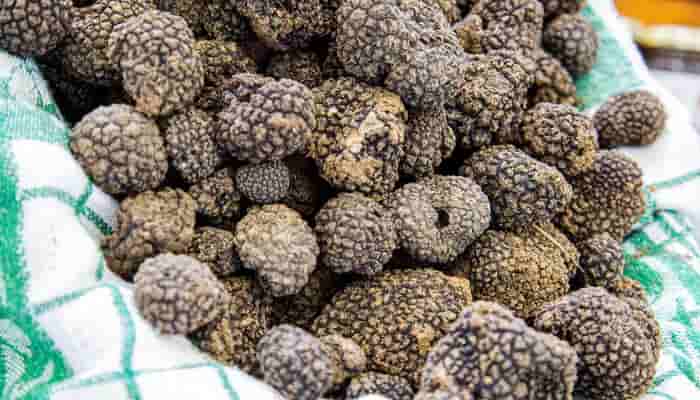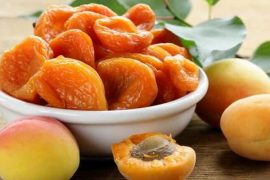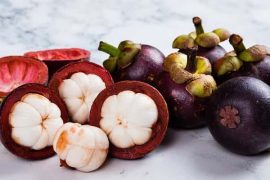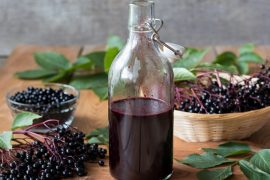Зміст
Truffles are not like classic mushrooms – they do not have a stem or cap. The structure of the truffle resembles a small, hard, compact and woody lump of black, brown or white color. They grow underground at a depth of 5-10 cm. Currently, dogs are used to collect these mushrooms, in the past it was domestic pigs (animals must be sensitive to the volatile compounds released by truffles). These mushrooms are becoming increasingly popular due to their unique aroma. What properties do truffles have, and where are they used?
What are truffles?
Truffles are ascomycotic mushrooms characterized by a hypogeal lifestyle (the optimal depth for the formation of fruiting bodies is 5-10-20 cm). Truffles live in symbiosis with various types of forest trees, such as oak, beech, hazel, linden, hornbeam, fir, alder, and spruce. For fungal development, the soil must have appropriate permeability of chemical components, as well as humidity and ambient temperature. The most valuable types of white and black truffles are found in Spain, France, and Italy. Historical sources report methods of searching for truffles – one of the main methods was the search for truffles by domestic pigs, which gave them the name “food of gods, kings, and pigs”.
Where do truffles grow?
European countries where truffles can be found are Portugal, Great Britain, Bulgaria, Italy in the south of Europe and the Baltic countries in the east of the continent. In Poland, truffles are found only in a few areas, are rare and are protected. White and black truffles are found mainly in Italy, France, and Spain. In desert countries such as Saudi Arabia, Jordan, Kuwait and Iraq, desert truffles are found and grow after the rainy season. The science that studies underground mushrooms is hydronology. Truffle gardens are increasingly being created in Ukraine and other countries as an economic and scientific project.
What properties do truffles have?
Scientists are constantly showing interest in the properties of these mushrooms. Currently, anti-inflammatory, antioxidant, immunostimulating, antimicrobial and hepatoprotective properties have been scientifically proven. Truffles are also used in cosmetics for their anti-wrinkle and regenerating properties.
Did you know that the science that studies underground fungi is hydronology?
Nutritional value of truffles
Nutritional value is determined by the type and degree of maturity of the mushroom. There are 284 kcal in 100 grams of product. More than 90% of the chemical composition is water. The amino acids contained in truffles are tryptophan, lysine, methionine and cysteine, which must be supplied to the human body through food. Lysine supports the absorption of calcium in the body. Methionine has a beneficial effect on the liver. Cysteine slows down the aging process. Due to the content of amino acids so valuable for health, it is a desirable additive to exclusive dishes or in cosmetology.
Remember: truffles have anti-inflammatory and antioxidant properties.
What are the benefits of truffles?
Truffles are widely used in the kitchen as an exclusive addition to dishes or as a spice. It is best to use fresh truffles no older than 14 days, as the longer they are stored, they lose their value and flavor. Dried and powdered truffles are used as a seasoning for dishes, soups, steaks and sauces – they give dishes a characteristic tart flavor. Manufacturers of products derived from these mushrooms produce truffle oil, truffle paste and other truffle-flavored products.
Contraindications for eating truffles
The literature does not describe any contraindications to the consumption of truffles, since they are difficult to obtain and their cost is very high (truffles are one of the most expensive mushrooms in the world. Therefore, there are no contraindications to the consumption of these nutritionally rich mushrooms for pregnant women or children.








